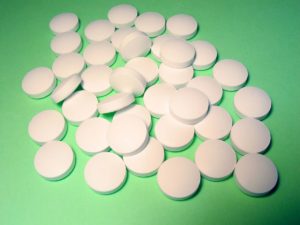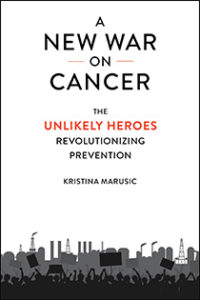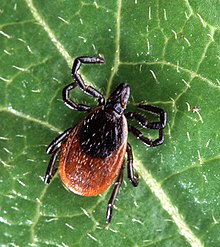 A gloomy and cold day, but the first flowers of the year have appeared.
A gloomy and cold day, but the first flowers of the year have appeared.
Feb. 1 in the northeast.
Health, Microbes, and More

 A gloomy and cold day, but the first flowers of the year have appeared.
A gloomy and cold day, but the first flowers of the year have appeared.
Feb. 1 in the northeast.
 There is much concern with the amount of highly or ultra-processed foods the typical American eats - over 50% of the calories eaten daily! Ultra-processed foods are linked to all sorts of health issues (e.g., diabetes, heart disease). One reason is because these foods are not good for the gut microbiome - they feed microbes linked to poor health and not the microbes linked to good health.
There is much concern with the amount of highly or ultra-processed foods the typical American eats - over 50% of the calories eaten daily! Ultra-processed foods are linked to all sorts of health issues (e.g., diabetes, heart disease). One reason is because these foods are not good for the gut microbiome - they feed microbes linked to poor health and not the microbes linked to good health.
So how does one know if a food is ultra-processed? An easy way is to look at the ingredients list on the package or container and look for one or more ingredients not normally found in our kitchens at home. Instead, these ingredients will have chemical sounding names.
What ingredients indicate a food is ultra-processed? Some examples indicating a food is ultra-processed: soy lecithin, carrageenan, high-fructose corn syrup, hydrogenated oils, interesterified oils, hydrolysed proteins, invert sugar, dextrose, lactose, gluten, whey protein, nitrates, flavors, colors, titanium dioxide, caramel color, and emulsifiers. The list goes on and on. Even the innocent sounding "natural flavors" is a laboratory concoction.
These ingredients have typically been added to extend shelf-life or manipulate the taste, flavor, or appearance. Ultra-processed foods are "formulations of ingredients" that result from a series of industrial processes (thus "ultra-processed"). Researchers of the following article say that "ultra-processed foods are not real food" due to all the modifications and alterations.
Note that ultra-processed foods can be on the grocery shelf right next to similar foods with all natural ingredients. Examples are breads, cereals, and maple syrup (is it real maple syrup or an ultra-processed concoction?). This is why you should read ingredient lists.
Also, these foods are generally ultra-processed: soda, candy, margarines, cake mixes, hot dogs and processed meats (e.g., cold cuts), instant soups, mass-produced breads and cookies, frozen meals, fast food meals, energy bars and drinks, and protein bars.
![]() By the way, most foods that we buy or cook at home are processed to some extent, for example pasteurization of milk, freezing or boiling foods, fermentation, seasoning foods, cooking food, or even baking bread. Using real foods to prepare (process) food is OK for our health. It's totally fine.
By the way, most foods that we buy or cook at home are processed to some extent, for example pasteurization of milk, freezing or boiling foods, fermentation, seasoning foods, cooking food, or even baking bread. Using real foods to prepare (process) food is OK for our health. It's totally fine.
Foods can be unprocessed (e.g., raw fruits and vegetables), minimally processed, processed, and finally ultra-processed. The ingredients will tell you if it's just processed food (contains only normal foods or culinary ingredients - e.g., flour, sugar, salt, eggs) or whether it's ultra-processed (contains one or more chemical sounding ingredients).
These foods are NOT ultra-processed: pasteurized milk, raw fruits and vegetables, starchy roots and tubers (e.g., potatoes, yams), chilled meat and fish, plant oils (e.g., olive oil), sugar, oats, and salt.
A big problem is that ultra-processed foods are replacing unprocessed or minimally processed foods in our diet. This is also why we are getting less and less fiber in our diet, which is linked to health problems. Simple way to think about it: fiber from foods feeds beneficial gut microbes.
Excerpts from an April 2019 article in Public Health Nutrition: Ultra-processed foods: what they are and how to identify them
Ultra-processed foods are defined within the NOVA classification system, which groups foods according to the extent and purpose of industrial processing.
...continue reading "How to Identify An Ultra-Processed Food"
 There has been medical debate over whether taking a daily multivitamin supplement has any benefits. Well, a third large study says YES - taking a daily multivitamin slows age-related memory loss and cognitive aging in older adults (60 years and older).
There has been medical debate over whether taking a daily multivitamin supplement has any benefits. Well, a third large study says YES - taking a daily multivitamin slows age-related memory loss and cognitive aging in older adults (60 years and older).
The researchers estimate that a daily multivitamin slowed cognitive aging the equivalent of 2 years when compared to persons not taking a multivitamin.
From Science Daily: Third major study finds evidence that daily multivitamin supplements improve memory and slow cognitive aging in older adults
By 2060, according to the Alzheimer's Association, nearly one in four Americans will be in an age bracket at elevated risk of cognitive decline and Alzheimer's disease unless interventions can help preserve cognitive function before deficits begin. ...continue reading "Study Finds Multivitamins May Slow Memory Loss In Older Adults"
 There is tremendous concern about microplastics and what effects they have on humans when ingested (yes, they are found in our bodies). Microplastics are the tiny plastic particles that occur as plastic breaks down over time. They have been found in foods that we eat, water that we drink, and basically everywhere.
There is tremendous concern about microplastics and what effects they have on humans when ingested (yes, they are found in our bodies). Microplastics are the tiny plastic particles that occur as plastic breaks down over time. They have been found in foods that we eat, water that we drink, and basically everywhere.
A new study confirms that bottled water is a huge source of microplastics in our diet. The researchers counted the microplastics in 3 brands of bottled water (without revealing the brands) and found that a liter contained an average of 240,000 plastic fragments. This is 10 to 100 times more than previous estimates, which had been based on larger plastic particle sizes.
Microplastics are 1 µm to 5 mm in length, while nanoplastic particles are even smaller plastic pieces - less than 1 µm or micrometer. (In contrast: human hair is generally about 70 micrometers thick). Nanoparticles are thought to be more toxic because they can more easily get into the body (into the lungs, blood, and organs) due to their small size.
Currently it is unknown what or if there are any effects from all these plastic particles in our bodies, but scientists are worried.
From Science Daily: Bottled water can contain hundreds of thousands of previously uncounted tiny plastic bits
In recent years, there has been rising concern that tiny particles known as microplastics are showing up basically everywhere on Earth, from polar ice to soil, drinking water and food. Formed when plastics break down into progressively smaller bits, these particles are being consumed by humans and other creatures, with unknown potential health and ecosystem effects. One big focus of research: bottled water, which has been shown to contain tens of thousands of identifiable fragments in each container. ...continue reading "Large Numbers of Plastic Particles Are In Bottled Water"
 One topic of concern is chronic wasting disease and its slow spread throughout the US and Canada. Now found in 30 states! Chronic wasting disease (CWD) is a prion disease that has no cure and is always fatal. It is similar to mad cow disease, but this fatal neurological disease occurs in cervids, such as deer, elk, and moose.
One topic of concern is chronic wasting disease and its slow spread throughout the US and Canada. Now found in 30 states! Chronic wasting disease (CWD) is a prion disease that has no cure and is always fatal. It is similar to mad cow disease, but this fatal neurological disease occurs in cervids, such as deer, elk, and moose.
Recently, The Atlantic had an article about the spread of chronic wasting disease, and how it could ultimately result in the extinction of deer in the US. Some estimates already have the deer population down several million (for several reasons, not just CWD). Or perhaps deer populations will get decimated, with only some deer living and reproducing until the age of 2, and then dying.
This is because the disease can be transmitted before symptoms appear. It takes a while (more than a year) for a deer to show symptoms and die, and it can be passed to newborn fawns from the mother deer when she uses her tongue to groom the newborn.
Incredibly, the disease particles are shed into the environment (e.g., from deer feces) and stay in the soil for at least a decade. It can even be taken up by plants (thus it's in the leaves that deer eat) from the soil.
And yes, if you're wondering, scientists are very concerned that some day this incurable prion disease can make the jump to humans. So far it hasn't, but this is one reason why hunters are told to bring in deer heads for testing (and definitely to not eat deer meat until results come back negative). Unfortunately, many people resist believing that there is a problem, and testing efforts vary from state to state.
Excerpts from The Atlantic: An Incurable Disease Is Coming for Deer
Jorge is leading a multiyear study at the University of Georgia on chronic wasting disease, an always-fatal neurological illness. Ubiquitous deer may be, but in CWD, they face a serious threat. From its first appearance in Colorado in the late 1960s, CWD has crawled steadily across the country. It is now found in more than 30 states and multiple Canadian provinces. ...continue reading "Deer Population Could Decline From Chronic Wasting Disease"
 People worry about breast cancer and whether exposure to chemicals "in the environment" can lead to breast cancer. According to many studies the answer is: YES, absolutely - and this is why they are called carcinogens (a substance capable of causing cancer). What are the chemicals?
People worry about breast cancer and whether exposure to chemicals "in the environment" can lead to breast cancer. According to many studies the answer is: YES, absolutely - and this is why they are called carcinogens (a substance capable of causing cancer). What are the chemicals?
A recent study found that 921 chemicals are likely "breast carcinogens" and thus increase the risk of breast cancer. Many of these are commonly used in everyday products, including personal care products. The authors also pointed out that this list of chemicals is incomplete because information is not publicly available on many additional chemicals . (Unfortunately, the EPA is not asking for more information and testing to be done on many chemicals.)
The authors of the study point out that breast cancer is "both the most commonly diagnosed cancer type and leading cause of cancer death among women worldwide". So knowing which chemicals could potentially cause breast cancer is important. Some examples: phthalates, parabens, many pesticides, endocrine disruptors.
Bottom line: Read ingredient lists in order to avoid many problematic chemicals. For example; if you see parabens or phthalates listed (e.g., in lotion) - avoid those products. Avoid fragrances, stain repellents, antimicrobials. Eat as many organic foods as possible (to avoid pesticide residues in non-organic foods). [See more tips on avoiding toxic chemicals.]
 Also, avoid using pesticides as much as possible, and instead use least toxic Integrated Pest Management (IPM) or organic methods, both inside the home and outside.
Also, avoid using pesticides as much as possible, and instead use least toxic Integrated Pest Management (IPM) or organic methods, both inside the home and outside.
Excerpts from Environmental Health News:
More than 900 chemicals commonly found in consumer products and the environment have been linked to breast cancer risk in a new study. ...continue reading "Hundreds Of Common Chemicals Are Linked to Breast Cancer Risk"
 It became official this month - the year 2023 was the warmest year on record! The global average temperature was significantly warmer than any other year.
It became official this month - the year 2023 was the warmest year on record! The global average temperature was significantly warmer than any other year.
Uh-oh. This is climate change, and the temperature increase is fueled by the burning of fossil fuels (e.g., coal, oil, gas) - which releases large amounts of carbon dioxide and other greenhouse gasses into the air.
Scientists think that 2023 is probably the hottest year going back 125,000 years. Will 2024 be another record-breaking year? The baseline is being set higher and higher, yet we keep breaking the new baselines. Important: "The 10 warmest years since 1850 have all occurred in the past decade."
Excerpts from NOAA (National Oceanic and Atmospheric Administration) - [do go to the site and see the graphics]: 2023 was the world’s warmest year on record, by far
It’s official: 2023 was the planet’s warmest year on record, according to an analysis by scientists from NOAA’s National Centers for Environmental Information (NCEI).
Along with the historic heat, Antarctic sea ice coverage dropped to a record low in 2023. ...continue reading "Will 2024 Be Warmer Than 2023?"
 There is another very good book to read about environmental causes of cancer. It's called A New War On Cancer: The Unlikely Heroes Revolutionizing Prevention by Kristina Marusic. Published by Island Press in 2023.
There is another very good book to read about environmental causes of cancer. It's called A New War On Cancer: The Unlikely Heroes Revolutionizing Prevention by Kristina Marusic. Published by Island Press in 2023.
What makes this book so interesting is that it profiles everyday individuals who are actively working towards preventing cancers caused by environmental causes. They are doing this by devoting their lives towards preventing cancers caused by pollution and chemicals implicated in causing cancer (e.g., pesticides, endocrine disruptors).
I found myself marking up the book as I read - so many good quotable statements. In the end it was a book that offers hope, and things we can all do.
The forward is written by Dr. Philip Landrigen - a famous researcher looking at toxic chemicals (e.g., pesticides, lead, chemicals in Gulf War Veterans' Illnesses) and how they impact human health. He is one of the world's leading advocates for children's health.
Book: A New War on Cancer: The Unlikely Heroes Revolutionizing Prevention By Kristina Marusic, with a Forward by Philip J. Landrigan , Island Press , 2023.

Will we soon have vaccines to protect us from Lyme disease? It turns out that there are two possible vaccines being tested right now, including one based on mRNA technologies (same as the Covid vaccines).
The mRNA vaccine has has been successfully tested in mice so far, and yes - it protected the mice from being infected with the bacterium Borrelia burgdorferi which causes Lyme disease. The second one is an intranasal protein vaccine (an established vaccine type) and is currently being tested on humans. But both vaccines are a while off yet.
Meanwhile, we're all waiting, waiting, waiting for a Lyme disease vaccine.
Excerpts from The Scientist - Newly Developed mRNA Vaccine Protects Against Lyme Disease
After walking through a forest or field of tall grass, public health agencies in many countries advise people to check their clothes, pets, and bodies for unwanted hitchhikers—ticks. These arthropods feed on the blood of mammals, such as mice, deer, livestock, and humans, as well as lizards and birds.1 Additionally, Ixodes ticks act as vectors, where they transfer disease-causing bacteria, viruses, or protozoa to their host during feeding. ...continue reading "Waiting For A Lyme Disease Vaccine"
 For a while now it has become clear to some scientists that the prevailing view of Alzheimer's disease (buildup in the brain of 2 substances: amyloid and tau) isn't correct. Instead, some researchers feel that there is growing evidence that viruses are implicated as a cause of Alzheimer's and other neurodegenerative diseases (e.g., vascular dementia, ALS, Parkinson's disease, multiple sclerosis).
For a while now it has become clear to some scientists that the prevailing view of Alzheimer's disease (buildup in the brain of 2 substances: amyloid and tau) isn't correct. Instead, some researchers feel that there is growing evidence that viruses are implicated as a cause of Alzheimer's and other neurodegenerative diseases (e.g., vascular dementia, ALS, Parkinson's disease, multiple sclerosis).
A recent study linked 22 viruses to the development of Alzheimer's disease and other neurodegenerative diseases (e.g., vascular dementia, ALS, Parkinson's disease, multiple sclerosis) within 15 years. The strongest association was for viral encephalitis and later developing Alzheimer’s disease. Influenza with pneumonia was associated with 5 neurodegenerative diseases.
The researchers also found a link between infection with Epstein Barr and later developing multiple sclerosis (this confirmed other recent research).
Other studies find that vaccinations (influenza, pneumonia, shingles) are associated with lower rates of Alzheimer's disease. This has also been found with antivirals (e.g., for herpes simplex).
From Science Alert: A Study of 500,000 Medical Records Links Viruses to Alzheimer's Again And Again
A study of around 500,000 medical records suggested that severe viral infections like encephalitis and pneumonia increase the risk of neurodegenerative diseases like Parkinson's and Alzheimer's. ...continue reading "Study Finds Link Between Viruses and Alzheimer’s Disease"